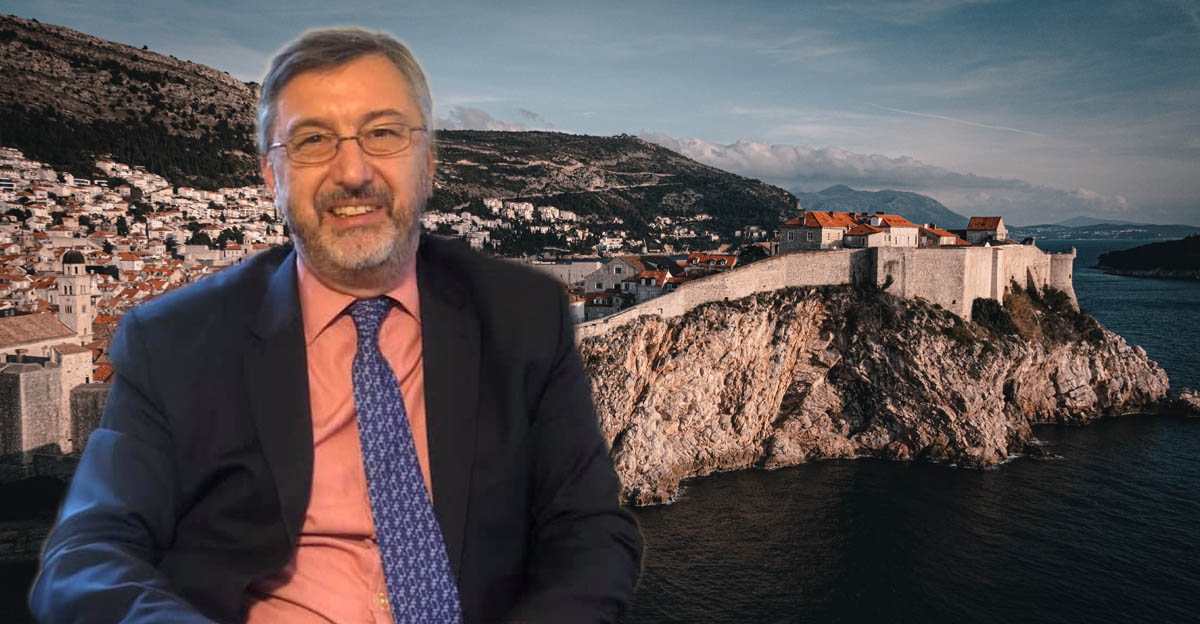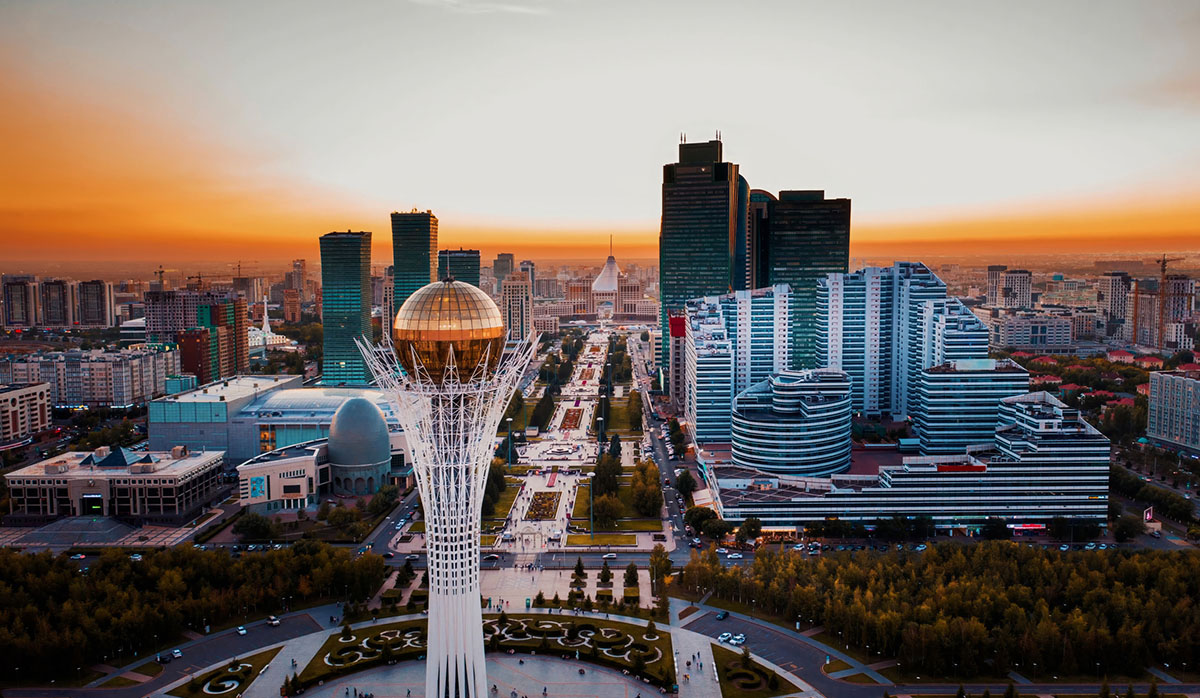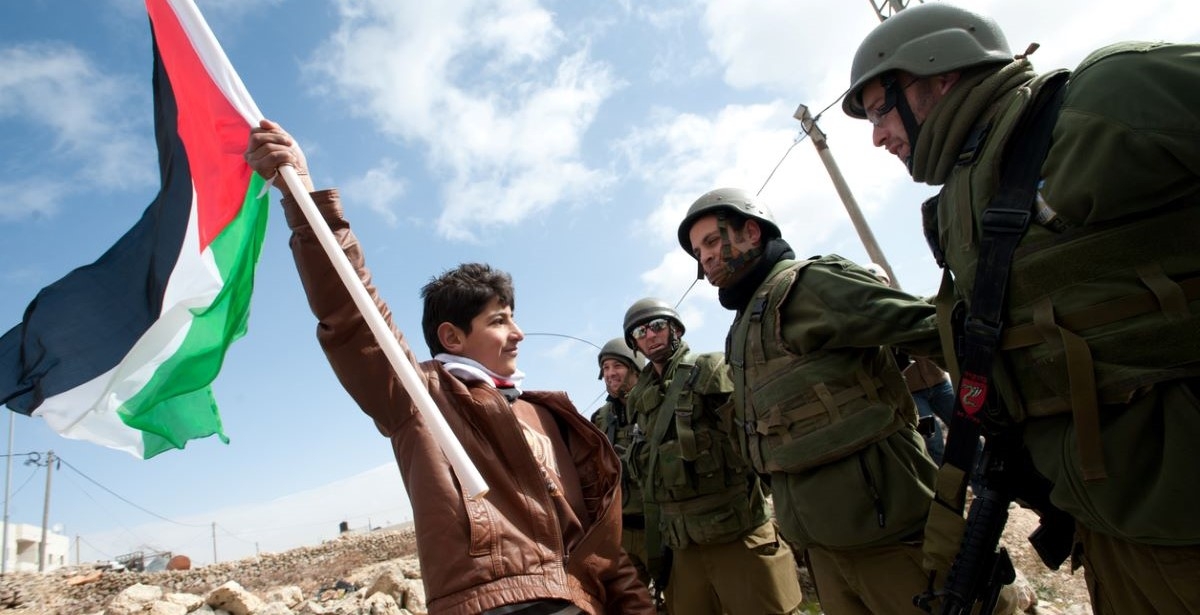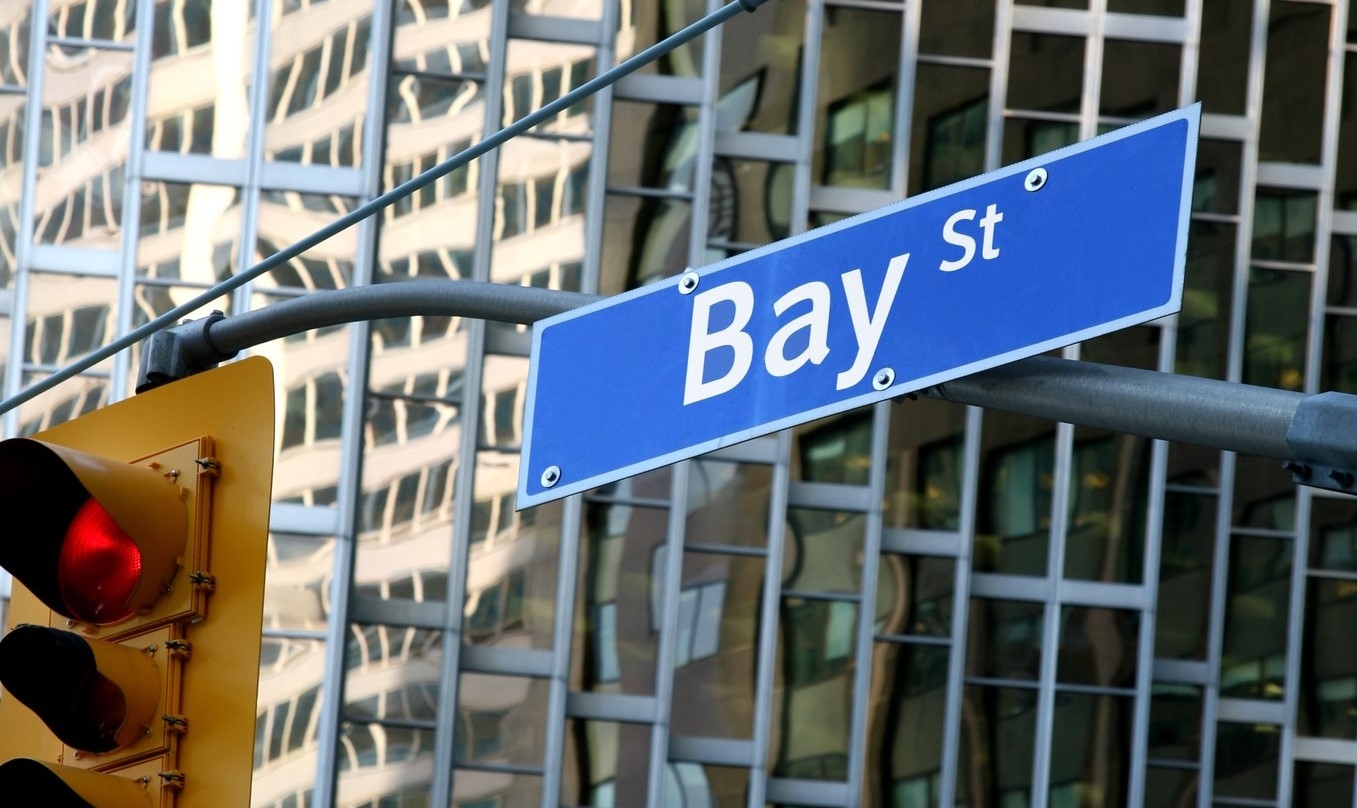
“All of Europe is interested in purchasing Canadian natural gas.”
ABOVE: Ambassador of Croatia to Canada, Vice Skracic.
Croatia Ambassador to Canada Vice Skracic on the EU, Canadian energy, and reasons behind the Croatian success in Europe.
Croatia is at the crossroads of central and southwest Europe. It spans an area of 56,594 square kilometres (21,851 square miles), hosting a population of nearly 3.9 million. It shares a coastline along the Adriatic Sea and borders Slovenia to the northwest, Hungary to the northeast, Serbia to the east, Bosnia and Herzegovina and Montenegro to the southeast, and shares a maritime border with Italy to the west and southwest. Croatia’s capital and largest city, Zagreb, forms one of the country’s primary subdivisions, with twenty counties. Politically, Croatia is a republic governed under a parliamentary system. It is a member of the European Union, NATO, the United Nations, the Council of Europe, the World Trade Organization, and a founding member of the Union for the Mediterranean.
OLM features writer Mckenzie Donovan recently sat down with the Croatian Ambassador to Canada, His Excellency Vice Skracic to discuss Croatia-Canada relations and Croatia’s influence as a respected middle power in Europe.
Ottawa Life Magazine: Croatia went from being a socialist member state in Yugoslavia to one of the most wealthy and stable European countries, with EU membership and a strong economy. What are some of the key factors behind the success of Croatia since the 1990s?
Ambassador Skracic: Croatia is a modern democratic country, but it took a lot of hard work and resolve …and more work to get to where we are now …. it will take continued work and resolve for Croatia to succeed in the long term.
In the early to mid-1990s, we went through a brutal war of aggression, a war that was imposed upon us by Serbia. We gained our independence and affirmed ourselves as an independent state. After the last area of Croatia was peacefully reintegrated via a very successful UN mandate in eastern Croatia, we made the strategic decision to become members of NATO and the European Union. Returning to the European mainstream, the circle of free, open, and democratic societies was a national project supported by all sides of the political spectrum in Croatia.
Croatia is now a member of the European Union, and Croatia will enter the Schengen zone as of the first of January next year. Also, the Euro will become the official currency in Croatia in January 2023, replacing our national currency, the Kuna. Joining the European Union is very challenging because you’re literally transforming your entire society to comply with the European Union’s rules and regulations. Many people misinterpret the concept of negotiations (for membership) with the European Union. It’s not a negotiation. The EU provides you with the guidelines and list of reforms you are required to implement in every chapter of your political and civil life. For example, from transport and health care to justice and home affairs, to name a few. In essence, you’ll get a list of things you’ve got to do, and then you do it. It’s not an easy process, but a necessary one to make you ready for membership. We entered the European Union in 2013. Soon it’ll be ten years, which is a nice milestone. I would say that we are only now beginning to understand the full impact of EU membership because there’s a lot there to absorb. Croatia is now also an official candidate for the OECD, and we are pleased that Canada supports Croatia’s membership bid in this organization.
Ottawa Life Magazine: And, Croatia has been a member of NATO since 2009.
Ambassador Skracic: We fought for our independence to get to where we are now. We have fortunately fulfilled many of our significant foreign policy goals regarding our shared aspirations. There was a period of affirmation after we proclaimed our independence and sovereignty from the former Yugoslavia, and then a process of reintegrating into the European mainstream. Part of that was joining NATO in 2009. NATO is a military organization – but also a political one, which means that you need to fulfill the political criteria of being a full democracy with a free-market economy to be a member.
As you know, not all of Europe has reintegrated into the European mainstream. One of our goals as a country is to help our neighbours achieve just that. It is, I would say, from a very practical and selfish point of view, because we want to see Europe become whole, free, and at peace, as former US President Bush (43) once said. So, we support all our neighbours’ ambitions for EU membership, as well as in NATO for those who wish it. A shared goal in Croatia is to ensure that we continue to contribute in a positive way to the stability of all of Europe, with a focus on our immediate neighborhood.
Ottawa Life Magazine: Canada and Croatia have a long history of cooperation dating back to the Former Yugoslavia; where do you see our country’s relationship heading in the next ten years?
Ambassador Skracic: Croatia and Canada are allies in NATO. We are partners in the European Union. Canada is a very like-minded country for us members of the European Union. They used to joke that if Canada was on the other side of the pond, you would already be an EU member by now. We are like-minded in the way that we do things. We hope things will continue along that vein. I think there’s much that we can do together. I’ve seen Croatian and Canadian peacekeepers working together. This is an excellent way that we can share responsibility around the world. Our respective prime ministers, Trudeau and Plenković, recently met at the UN to discuss the burning issues of Ukraine and other international issues that we can work on together, including those in our region of the world.
I think another very strong thing that ties us together is the Croatian diaspora. There are approximately 250,000 people of Croatian descent in Canada, mainly in lower Ontario and Western Canada. We have smaller communities here in Ottawa and Montreal, but the great majority of more than half live in the GTA area. We also have very big communities in Vancouver as well as Calgary, and Edmonton. So, this diaspora helps brings our two societies closer together. These people came to Canada and helped build and form what Canada is today.
Ottawa Life Magazine: Croatia, like Canada, is a parliamentary democracy. How similar is our system of government to yours?
Ambassador Skracic: We have parliamentary democracies, but that’s where the similarities pretty much end. Croatia started as a semi-presidential system when we broke away from the former Yugoslavia. At that time, we had a semi-presidential system in place and two Houses of Parliament – the House of Representatives and the House of Counties. We changed that in the late 1990s and early 2000s, in that the preceding semi-presidential system was transformed into a full parliamentary democracy. At the same time, it was also decided that Croatia would be better suited to have a unicameral system of Parliament, with the elimination of the House of Counties.
The executive was then transferred from the presidency to the government. The President no longer retained executive powers, which are now in the hands of the Prime Minister, but the Prime Minister and the President continue to be directly elected. The President has certain constitutional powers, including signing off on ambassadorial appointments abroad, military promotions, and other duties. Croatia has 151 members of Parliament and ten electoral districts. Of those, 14 members of Parliament get elected from each electoral district, so that’s 140 members. There are eight members of Parliament elected from our national minorities, including three from the Serbian national minority. And three members of Parliament are elected from the diaspora. So, with 151 members of Parliament, you need 76 votes to form government.
Ottawa Life Magazine: Was the presidential system replaced after former President Tudjman departed from office?
Ambassador Skracic: Yes. As I just stated, in the early 2000s we decided to transform ourselves from a semi-presidential to a complete parliamentary democratic system. In essence, we wanted to ensure that the full spectrum of checks and balances were in place. Like here in Croatia, we have the separation of powers – the Judiciary, the Parliament, and the Executive. However, as opposed to the Canadian (Westminster) system, which is first past the post, Croatia has a proportional system. So, in each electoral district where you elect 14 members of Parliament, you must get above a certain percentage to have one member of your party elected to Parliament. That cutoff is generally around five to six percent in each electoral district.
In Croatia, ministers in government cannot also serve in Parliament, which is different from the Canadian system; each of your ministers is also a member of Parliament. In our system, if a member of Parliament is asked to serve in government, they need to put their membership in Parliament on hold. And then they get replaced for the time that they are in government but can reactivate their parliamentary mandate once they cease to be a member of the government. Those are the most significant differences.
Ottawa Life Magazine: With ongoing turbulence in the Balkan region being exacerbated following Russia’s invasion of Ukraine and instability in Bosnia being a concern again, what role does Croatia want to play in the new European order?
Ambassador Skracic: Croatia plays a significant role as a responsible member of the European Union and NATO. What we would like to see is that all these countries find their place in the European mainstream. We find that the more that they look towards reintegrating into Europe through the negotiation processes, their societies become closer to us in every aspect. We are, of course very concerned with both the situations in Ukraine and Bosnia-Herzegovina, but also with the continued stability of Montenegro (due to constant meddling from outside sources, including by Serbia and the Serbian Orthodox Church in Montenegro’s internal affairs) as well as Kosovo (the lack of meaningful progress in its attempts to normalize relations with Serbia).
What is happening in Ukraine is reminiscent of what happened in Croatia in the early 1990s, only here it is, Russia imposing a war on Ukraine. Russian President Putin keeps on upping the ante and becoming more and more extreme in his positions, justifying his actions by saying that they’re defending Russia from (ostensible) Western actions. The irony of the whole thing is that Russia, in the last 70-odd years, has never been more secure in its borders than it is now. No one was threatening Russia. No one wanted to threaten Russia. Russia, and the general Russian populace, were getting increasingly used to being an integral part of Europe. If you watched the FIFA World Cup in 2018, you could witness first-hand the great amount of back-and-forth mobility between us. So, this war that Russia has imposed on Ukraine is, for us, in so many ways, just wrong.
But the problem is that the Ukraine people are suffering because of his (Putin’s) war and his delusions. The bombardments taking place in eastern Ukraine and elsewhere have deliberately targeted civilians to achieve Putin’s goals of annexation. Ukraine has a sovereign right to defend itself and a right to choose its own future. No one can or should tell them where they need to be in the next ten to twenty years. That decision is up to the Ukraine people, not Russia nor anyone else. If Ukraine wants to become closer to the European Union, as they’ve expressed, we must respect that. And this is what we’ve told the Russians the entire time: they need to respect what the Ukrainian people want. We understand Russia has security concerns, and we are willing to work with Russia on this. But not in the midst of their invasion of this country.
Let me add that the biggest difference between the situations in Ukraine now and Croatia and other countries of the former Yugoslavia in the early 1990s is that Ukraine enjoys an incredible amount of international solidarity and support, something that we did not have. Our difficulty in getting international support came mainly because the prevailing opinion in the early 1990s was that the former Yugoslavia Federation needed to be saved, regardless of its many faults. Croatia and its political leaders did enter into good-faith negotiations with Serbia and the other former Yugoslav republics in the late 1980s, early 1990s, but it quickly became apparent that this policy of trying to keep the former Yugoslavia together was untenable. The primary reason for this was the extreme positions espoused by Serbia and its leader at the time Slobodan Milošević. He and Serbia disproportionally controlled and wished to continue to control many elements of government and finance in the former Federation at the expense of all the other republics, pushing us to choose a different path. Now Bosnia-Herzegovina was probably the worst affected country in the wars, which precipitated the breakup of the former Yugoslavia. The war in Bosnia-Herzegovina was very brutal but conducted along the same patterns as what happened in the preceding year in Croatia – the Serb-controlled Yugoslav army would bombard cities, towns, and other civilian settlements and targets, in order to break the resolve of the defenders and eventually then annex those parts of Croatia (and Bosnia-Herzegovina) into a greater Serbia.
For this Greater Serbia policy Croatia as well as the Bosniak and Croatian people of Bosnia-Herzegovina, paid a heavy price. The war in Bosnia-Herzegovina came to an end with the signing of the Dayton Peace Accords in 1995. Now, the Dayton Accords are, in effect, a power-sharing agreement between the three constituent peoples of Bosnia-Herzegovina. It provided the basis upon which they could all contribute to the future of their country and work together. The three constituent peoples – the Bosniaks, the Croats, and Serbs – govern Bosnia-Herzegovina together. This agreement brought peace to Bosnia-Herzegovina and slowly put them on the path toward European integration. Unfortunately, there have been, you could say, shifts within Bosnia-Herzegovina society in the last few years, shifting them from this path.
The Serbs have a leader, Milorad Dodik, who openly espouses separation from Bosnia-Herzegovina. He is trying to push the envelope and looking at using any means possible to make Bosnia-Herzegovina as dysfunctional as possible, to prove their point that they need to be or are a separate state. The Republic Srpska government in Bosnia-Herzegovina is also allowing for nefarious outside influence, including from the Russian Federation, to achieve this goal. Russia would welcome another distraction in Europe so that Europeans would be forced to divert attention away from Ukraine. So, we’re being very cautious with following what’s happening there.
On the other hand, you have the Federation of Bosnia-Herzegovina; the other federal unit is that country, which was created by the Washington Agreement in 1994 between the Bosniaks and Croats of Bosnia-Herzegovina. So far, the Federation has remained relatively stable, despite increasingly significant political differences between the Bosniaks and Croats regarding their political representation in government and Parliament. For example, in the Federal Presidency of Bosnia Herzegovina, in accordance with the Dayton Accords, you have a Serb, a Bosniak, and then you have another, who is supposed to be a Croat. Unfortunately, for the fourth time now since the signing of the Dayton Accords, this person has been elected not by the Croats of Bosnia-Herzegovina but by the Bosniaks. This person does not nor does he pretend to defend the interests of the Croats in Bosnia-Herzegovina, but rather the interests of one part of the Bosniak people in that country. This has been made possible due to election engineering, a manipulation of the Dayton Accords, where the Bosniaks nominate a so-called Croat candidate, who is then elected with Bosniak rather than Croat votes since they outnumber the Croats of Bosnia-Herzegovina three to one.
Croatia has warned on numerous occasions that unless all three of the constituent peoples of Bosnia-Herzegovina are guaranteed political equality, which is the basis of the Dayton Accords and upon which peace in Bosnia-Herzegovina was built, this agreement could unravel. We are working with the Croats in Bosnia-Herzegovina to help them resolve this issue with their Bosniak counterparts, stressing that stability and security in Bosnia-Herzegovina needs to flow through the full respect, in letter, and in spirit, of the power-sharing agreement that is the Dayton Accords. If the Croats become estranged from political life, if their political equality is not guaranteed and respected, they may lose interest in the political future of the country. This is very acute for us. It’s not just the federal presidency at stake but also other levels of parliament and government within Bosnia-Herzegovina. There are ongoing attempts by certain Bosniak political circles to exclude Croats from all of these power structures. Now I would say this is doubly unfortunate because the Croats of Bosnia-Herzegovina are the only ones in the country who truly look toward the West. The Serbs in Bosnia-Herzegovina see Serbia and Russia as their benefactors and protectors and welcome any dysfunction in Bosnia-Herzegovina. The Bosniaks have mentors who are not from Western Europe. But the Croats look towards Brussels. Again, while we recognize that Bosniaks were the greatest victims in the wars of the former Yugoslavia, we would point out that like, Derek Chollet argued in his book “The Road to the Dayton Accords,” it was only through the joint actions of the Bosniaks and Croats of Bosnia-Herzegovina, including against the more heavily armed Bosnian Serb forces, were we able to create the conditions for the Dayton Peace Accords to happen. So, we would encourage cooperation between the Bosniaks and Croats in the re-establishment of equitable political representation at all levels of government and parliament and to work together towards the common goal of bringing Bosnia-Herzegovina closer to Europe.
Ottawa Life Magazine: What are the key industries in Canada-Croatia trade relations?
Ambassador Skracic: Trade between Canada and Croatia is solid but relatively small. We have several niche trade areas that we work together well in. The Comprehensive Economic and Trade Agreement (CETA) between the European Union and Canada, which eliminates close to 99% of tariffs between the two sides, has certainly helped here. Croatian wines are something that we increasingly export to the Canadian market. Croatia is not only becoming an increasingly recognizable tourist but also a wine destination, and culinary delights and wine are becoming more and more prominent when people think of Croatia. We export a lot of foodstuffs here, not too many cheeses because Canada is very protective of its dairy market, but a few different sorts of cheeses that you don’t have here (like soft or cream cheeses). Croatia imports from and exports to Canada a wide range of pharmaceuticals. Croatian lumber and furniture are a large export item, and Croatian designers are making their mark here. Our biggest IT company, called Infobip, opened its North American headquarters in Vancouver. Vermillion Energy, an Albertan Oil and Gas company, has also applied for and received concessions for gas deposits found in eastern Croatia and should start drilling soon. Shipbuilding is another big industry. A southern Ontario shipping company has received two big freighters with self-unloading capacity and is preparing an order for a third. Croatian shipyards realized early on that they could not compete in the mass production of large cargo ships and oil tankers with Asian competitors, so they transformed themselves so that they could make specialized boats for special orders.
Ottawa Life Magazine: Is Croatia interested in purchasing Canadian Natural gas and oil after this year’s European energy crisis?
Ambassador Skracic: All of Europe is interested in purchasing Canadian natural gas. I was flabbergasted by the sheer volume of natural gas deposits in Alberta and Manitoba. It’s such a huge number that it is mind-boggling (the conservative estimate being 39,000 BCMs). In effect, Canada has enough natural gas for the next thousand years. The biggest problem is that Canada does not have a distribution system toward eastern Canada. These are strategic questions that Canada needs to ask itself if it’s willing to help Europe more directly. Canada would need to figure out a way to bring its energy and gas resources from the west to the east. Europe is weening itself off Russian gas, which may cause a hard winter with restrictions in certain areas, but we need to let Russia know that until they stop doing what they’re doing in Ukraine, we will find other markets for natural gas.
Ottawa Life Magazine: Croatia is one of Europe’s best-known tourism spots, particularly Dubrovnik and Split. How is Croatia’s Tourism industry recovering from the Covid-19 pandemic?
Ambassador Skracic: About 20% of Croatia’s GDP comes from tourism. It is a big part of our economy. I think that we’ve already had 15 million tourists visit Croatia this year, a very big number for a nation of 4 million people. So yes, tourism is coming back in a big way, as people are traveling again. One of the things that helped here was the direct flights from Toronto to Zagreb. Air Transat has reintroduced these direct flights this year. Air Canada used to fly directly to Zagreb from Toronto, but they’ve decided to delay the reintroduction of this flight until probably next year. We are hopeful they will resume next year and that these and other Canadian airlines will look at opening flights to more Croatian destinations, including Split, which would bring the Croatian tourist market that much closer to the average Canadian.
Ottawa Life Magazine: Where else in Croatia should Canadians visit that we might not know about as well as the famous destinations?
Ambassador Skracic: The coastal cities and the islands are frequented by tourists in the summer months. Dubrovnik, Split, Šibenik, and Zadar are lovely coastal cities, not to mention the Istrian peninsula and cities like Pula and Rovinj. We have great continental destinations in Northern Croatia with a great wealth of natural thermal springs and castles that are interesting to visit. Zagreb is becoming an increasingly important tourist destination at all times of the year. For two years in a row before the pandemic, Zagreb was selected as the best advent destination in Europe, a time when the whole city lights up – it’s beautiful to see. Medical tourism is also now very strong in Croatia, as North Americans and many Europeans come to Croatia for dental work and other procedures and then continue with their vacations. Croatia has many national parks for a relatively small country, including Plitvice National Park and the Krka National Park, both recognizable for their cascading waterfalls.
In fact, the Krka National Park was the site of the second-ever hydroelectric power plant to be built after Niagara, under the guidance of Nikola Tesla, who was born in the central Croatian town of Smiljan. The Krka plant and its electric grid, built by Croatian engineers and opened in 1895, made Šibenik the first city in the world to successfully implement Tesla’s alternating current system, proving that electricity can be transported over long distances without power loss, powering the city’s industry and lighting its streets and squares. And last but certainly not least, we have an abundance of mountainous national parks for hikers and rafting.
Ottawa Life Magazine: You’ve been an ambassador to Canada since 2019; what’s your favourite place in Canada you’ve visited?
Ambassador Skracic: Canada is enormous, and you have a lot of natural beauty. I’ve managed to see some of Ontario, including inland Ontario and some of the natural parks. I have friends who love to go camping, so we go and visit these places like the Thousand Islands and areas in and around Gatineau National Park. And, of course, Mont-Tremblant is a must-see. I came here at the end of 2019, and as we all know, everything stopped three months later, in March 2020. In my time here, I’ve managed to visit Vancouver and Victoria on more than one occasion, but what I’d love to do is explore more of inland BC, as I’ve heard it’s a beautiful area. I went to the Calgary Stampede last year, and it was a very interesting visit. My first ever rodeo! One thing I’d like to do is the drive from Calgary to Vancouver through Banff and Lake Louise. I’ve seen the photos, and I’m sure they don’t do it justice. I’ll be going to Saskatchewan this year in October, and Manitoba in the spring of next year. I’ve also managed to visit Halifax and tour some of Nova Scotia. Before finishing my mandate here in Canada, it is my intention to visit as many of the provinces as possible. Canada is very different from Croatia, but you are a country with much natural beauty, stunning landscapes, and resources, making you abundantly wealthy.
PHOTO: Background image of Dubrovnic, Pexel, Walder









